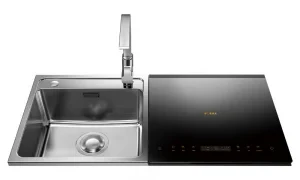Technology plays a crucial role in ensuring seamless communication and productivity. One such technology that has revolutionized the way we communicate is VoIP (Voice over Internet Protocol) phone systems. VoIP phone systems utilize the internet to transmit voice signals, offering cost-effective and feature-rich communication solutions for businesses of all sizes.
Introduction to VoIP Phone Systems
VoIP phone systems have gained popularity due to their flexibility, scalability, and cost-saving benefits. By leveraging the power of the internet, businesses can enjoy crystal-clear voice quality, seamless call routing, and advanced features such as voicemail-to-email transcription, call recording, and virtual receptionist services. However, like any technology, VoIP phone systems are not immune to technical issues that can impact their performance and reliability.
Common Issues with VoIP Phone Systems
Despite the many benefits of VoIP phone systems, users may encounter common issues that can hinder their overall experience. Some of the most common issues include:
- Poor Call Quality: One of the most common complaints with VoIP phone systems is poor call quality, which can manifest as choppy audio, echoes, or delays in voice transmission. This issue is often caused by insufficient bandwidth, network congestion, or improper configuration of the VoIP system.
- Dropped Calls: Another frustrating issue that users may experience is dropped calls, where the call abruptly ends without warning. Dropped calls can be caused by network issues, hardware malfunctions, or inadequate internet connectivity.
- Echoes and Feedback: Echoes and feedback during calls can be distracting and make conversations difficult to follow. This issue is typically caused by audio feedback loops within the VoIP system, which can be resolved by adjusting the system settings or using echo cancellation technology.
- Call Connectivity Problems: Users may also encounter issues with call connectivity, where they are unable to establish a connection or experience delays when making calls. This can be caused by firewall restrictions, incompatible hardware, or network configuration issues.
Troubleshooting Common Issues with VoIP Phone Systems
To ensure smooth operation and optimal performance of your VoIP phone system, it is essential to troubleshoot common issues promptly. Here are some effective troubleshooting tips:
- Check Internet Connection: Start by checking your internet connection to ensure that you have sufficient bandwidth and a stable connection. Slow or unstable internet can lead to poor call quality and dropped calls.
- Update Firmware and Software: Make sure that your VoIP phones, routers, and software are up to date with the latest firmware and updates. Outdated software can lead to compatibility issues and performance problems.
- Adjust Network Settings: Review your network settings and prioritize VoIP traffic to ensure smooth call transmission. Quality of Service (QoS) settings can help prioritize voice traffic over data traffic, improving call quality and reliability.
- Test Hardware Components: Verify that all hardware components, such as routers, switches, and VoIP phones, are functioning correctly. Replace any faulty hardware to resolve connectivity issues and improve call quality.
- Contact Your Service Provider: If you continue to experience issues with your VoIP phone system, contact your service provider for assistance. They can troubleshoot network issues, update settings, and provide guidance on optimizing your VoIP system.
Conclusion
In conclusion, VoIP phone systems offer a cost-effective and feature-rich communication solution for businesses, but they may encounter common technical issues that require troubleshooting. By following the tips outlined in this article and seeking assistance from your service provider when needed, you can ensure smooth operation and reliable performance of your VoIP phone system. Embrace the power of VoIP technology and streamline your communication processes for enhanced productivity and collaboration.







































